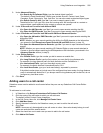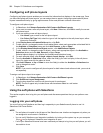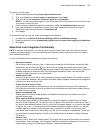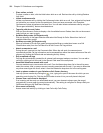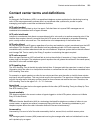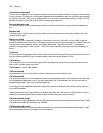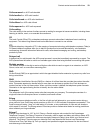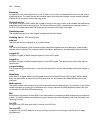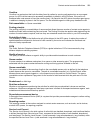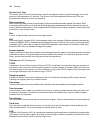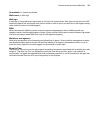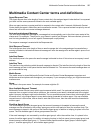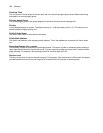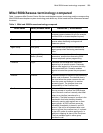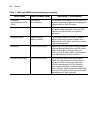Contact center terms and definitions 593
Overflow
Overflow is a mechanism that limits the delay faced by callers by queuing calls against two or more agent
groups. An ACD call that cannot be answered immediately is placed in an ACD queue. If the call is not
answered after a set amount of time (the overflow time), it is placed in the ACD queue of another agent group,
in addition to keeping its place in the first queue. The first available agent in either group handles the call.
Path unavailable see Queue unavailable
Pooling principle
The pooling principle is a consolidation of resources that allows the same number of contact center agents to
handle more calls while maintaining Service Levels. The Pooling Principle also applies when determining the
number of contact centers required, and how they are networked across time zones in your ACD enterprise.
Probability of delay
The probability of delay is the likelihood a call will be delayed in the ACD queue. It relates the number of
agents/extensions compared to the level of traffic carried by the trunks and indicates the likelihood and
amount of delay experienced.
PSTN
The Public Switched Telephone Network (PSTN) is a global collection of CO’s interconnected by long
distance telephone switching systems.
Quality of service
The quality of service reflects an agent’s ability to provide excellent assistance to each customer.
Queue number
A queue number is an address mechanism for a queue or other answering point. The programming
associated with the queue number defines the routing and timing options available to the call.
Queue unavailable
The queue unavailable is the rerouting of calls to the unavailable answer point as defined in the telephone
system because the queue is unavailable. The path is unavailable because it is in Do Not Disturb, either
because there are no agents logged on, or the supervisor puts the path into Do Not Disturb. The queue
unavailable column represents a peg count for the number of calls received while the path was in Do Not
Disturb.
Readerboard see Wall sign
Real-time adherence
Whether or not agents are performing the activities for which they are scheduled is known as real-time
adherence. Workforce management tools keep supervisors informed of discrepancies between agents’ work
schedules and the actual activities they perform.
Recorded announcement device
A Recorded Announcement Device (RAD) is a system that provides prerecorded messages to callers waiting
in the ACD queue.
Reporting number
The reporting number is the number assigned to contact center resources, such as trunks, and to devices,
such as ACD queues, for reporting purposes.
Service Level Percent
The Service Level Percent is the total number of calls which are handled, abandoned, and interflowed before
a defined threshold time (Service Level Time), compared to the total number of calls handled, abandoned,
and interflowed. The Service Level Percent = (calls answered + long calls abandoned + long interflow) within
the specified Service Level Time ÷ (calls answered + long calls abandoned + long interflow).



